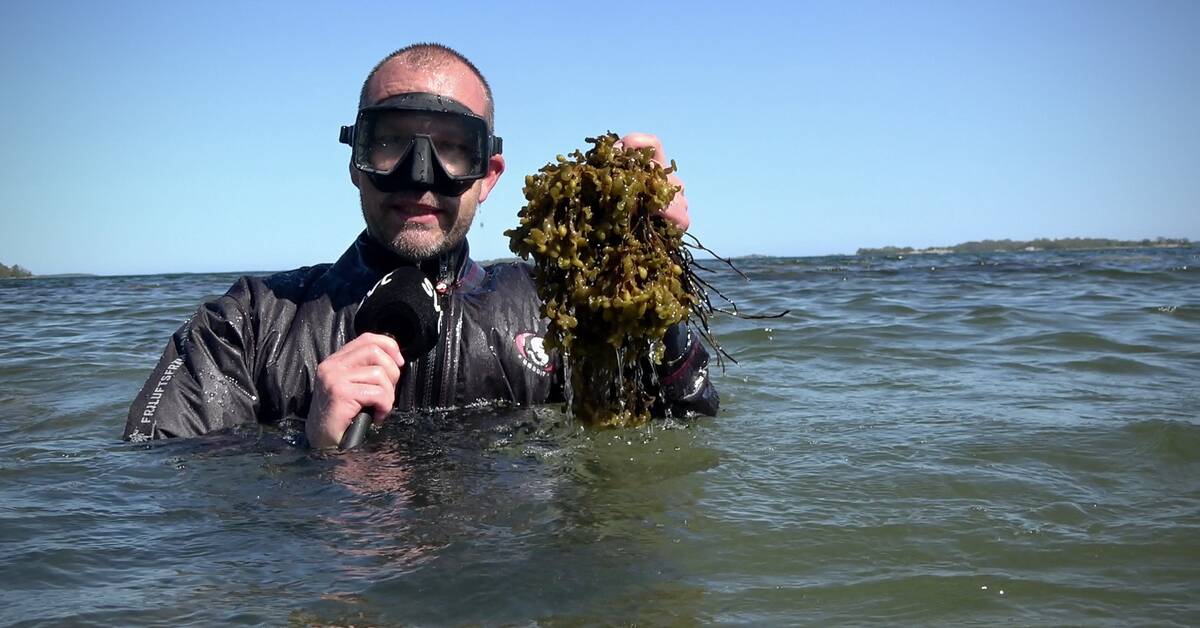Previously, there were plenty of both pike and trout in the water outside Kapellskär in Norrtälje municipality. Finland ferries, cruise ships and cargo ships pass here, among other things, and heavy boat traffic has destroyed the seabed that has eroded to pieces. To recreate a good habitat for life below the surface, Sportfiskarna together with WWF have created an artificial reef below the surface.
"The reef both protects the vegetation from being sucked out by the waves and creates a calm habitat for small fish that can become food for larger predatory fish," says Malin Kjellin.
During a few nights with a full moon in May and June, bladderwrack releases its eggs and sperm to multiply. Lena Kautsky is called "Aunt Seaweed" and has spent a lot of time researching bladderwrack. Photo: Tomas Blideman/SVT
New method
The method of building artificial reefs with blasted rock laid in the water is new and is a pilot project to protect the seabed from erosion caused by ship traffic. Along the artificial stone reef, divers place bouquets of bladderwrack that will release eggs and sperm so that new seaweed begins to grow.
"Bladderwrack is the Baltic Sea forest and important for biodiversity. A lot of wildlife hides in the seaweed. Perch like to put their roe in the seaweed rushes," says Lena Kautsky, professor emeritus at Stockholm University.
Even in Södertälje, heavy boat traffic causes damage to the bottoms. In the autumn, Sportfiskarna is therefore planning a similar project in the South Bay in Södertälje.

